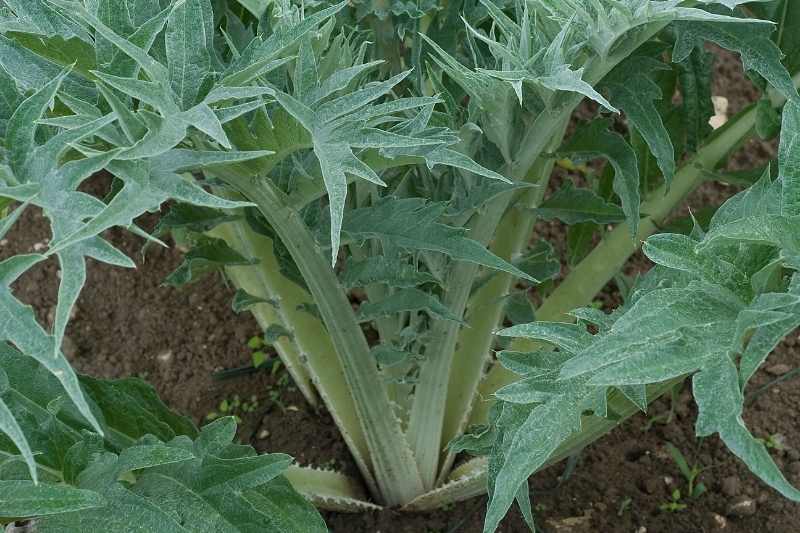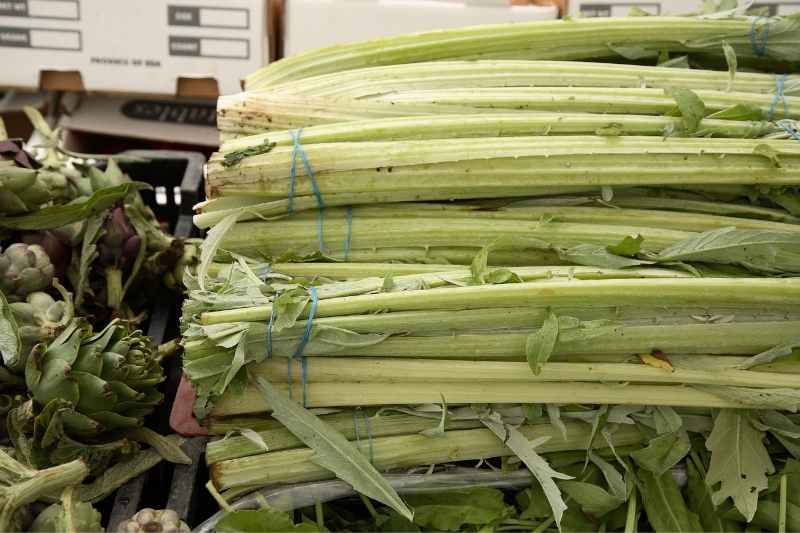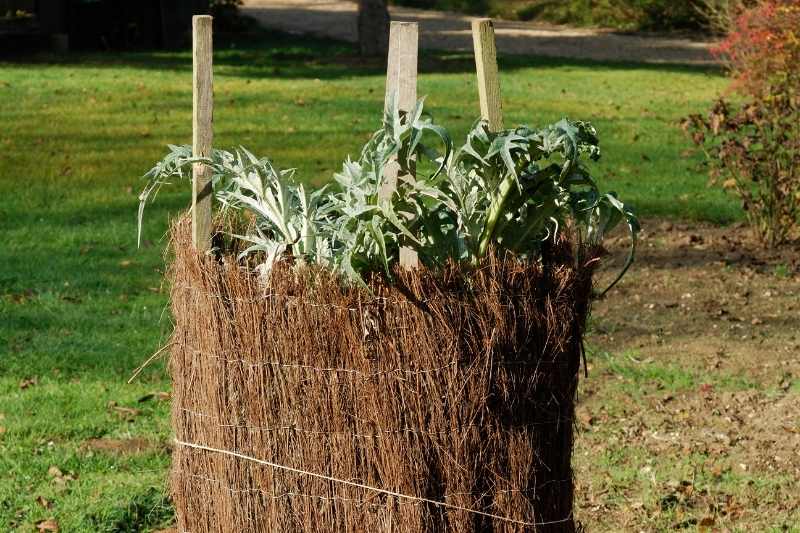Cardoon (Cynara cardunculus) is a biennial vegetable plant grown for its leaf midribs. This vegetable is also decorative thanks to its very deeply divided foliage, grey-blue or silvery in colour, and its flowering producing large thistles in shades from indigo to violet. For consumption, the cardoon midrib, or carde, must be blanched beforehand. It can then be prepared in gratins, pureed, juiced, served with marrow or as an accompaniment to meats. Cardoon midribs are rich in fibre, mineral salts and carbohydrates.

Cardoon or Cynara cardunculus
Why blanch cardoon midribs (cardes)?
By depriving certain parts of the plant, here the midribs, of light, these parts can no longer carry out photosynthesis. Chlorophyll therefore disappears from these parts, which, in garden cardoons, makes cardes more tender.

Blanched midribs of cardoons on a market stall
When to blanch cardoons?
This operation is carried out in September, about 3 to 5 weeks before harvest. Harvest can continue until frosts. Frost blackens the midribs, making them inedible. However, you can lift the cardoon from the ground and replant the plant in sand in a dark, well-ventilated place (a well-ventilated cellar). This way, midribs or cardes can still be consumed.
How to blanch cardoons?
Simply prevent sun rays from touching the leaf petioles (the cardes or midribs). These, deprived of light, will blanch over the course of weeks.
- Remove damaged stems and leaves;
- Clean the cardes to be blanched slightly: just by hand, removing dead leaves or other plant debris that may have accumulated in the centre of the clump;
- Tie leaves together using a good string;
- Create a protective sleeve either with straw (old practice) tied around the plant base, or, more simply, using a cardboard you will attach with a cord ;
- Finish the operation by earthing up using a hoe, that is, by bringing soil up into a mound around the base of the cardoon.

Here cardoons have been protected with heather































![[plant id="1234" care="blanching"] [plant id="1234" care="blanching"]](https://en.promessedefleurs.eu/blogwp/wp-content/uploads/2022/07/blanchir-cardon.jpg)
Comments